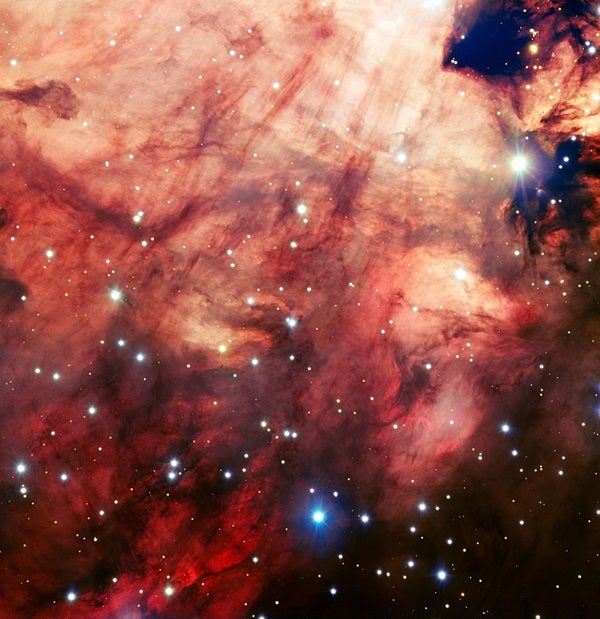The Swan Nebula, a stellar nursery where infant stars illuminate and sculpt dust and gas, is revealed in all its glory by a new European Space Observatory (ESO) image.
The Swan Nebula, sometimes called the Omega Nebula, is a dazzling stellar nursery located about 5,500 light-years away towards the constellation Sagittarius the Archer. An active star-forming region of gas and dust about 15 light-years across, the nebula has recently spawned a cluster of massive, hot stars. The intense light and strong winds from these hulking infants have carved remarkable filigree structures in the gas and dust.
When seen through a small telescope, the nebula has a shape that reminds some observers of the final letter of the Greek alphabet, omega, while others see a swan with its distinctive long, curved neck. Other nicknames for this cosmic landmark include the Horseshoe Nebula and the Lobster Nebula.
Swiss astronomer Jean-Philippe Loys de Cheseaux discovered the nebula around 1745. The French comet hunter Charles Messier independently rediscovered it about 20 years later and included it as number 17 in his famous catalog. In a small telescope, the Swan Nebula appears as an enigmatic ghostly bar of light set against the star fields of the Milky Way. Early observers were unsure whether this curiosity was really a cloud of gas or a remote cluster of stars too faint to be resolved. In 1866, William Huggins settled the debate when he confirmed the Swan Nebula to be a cloud of glowing gas, through the use of a new instrument, the astronomical spectrograph.
In recent years, astronomers have discovered that the Swan Nebula is one of the youngest and most massive star-forming regions in the Milky Way.











